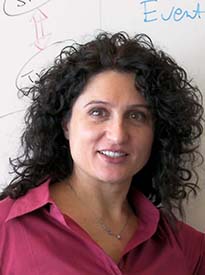 Professor Valeria Bertacco, University of Michigan
Professor Valeria Bertacco, University of Michigan
September 29, 2022, 4 p.m.
Title: Beyond AI: Societal Opportunities for Future Hardware Design
Abstract: Computing hardware has long been a critical component in the advancement of technology. Most recently, we've witnessed an explosive progression in the capabilities and applications of AI, enabled in large part by AI hardware acceleration. Looking beyond the potential benefits of AI acceleration, what else can future hardware designs contribute to benefit society? In this talk, I'll propose three emerging areas of research that are poised to have a significant impact on our world: hardware enforcement of data privacy, novel system designs to tame and exploit the data flood, and new paradigms of sustainable computing.
Bio: Valeria Bertacco is the Mary Lou Dorf Professor of Computer Science and Engineering at the University of Michigan, and Adjunct Professor of Computer Engineering at the Addis Ababa Institute of Technology. Her research interests are in the area of computer design, with emphasis on specialized architecture solutions and design viability, in particular reliability, validation, and hardware-security assurance. Her research endeavors are supported by the Applications Driving Architectures (ADA) Research Center, which Valeria directs. The ADA Center, sponsored by a consortium of semiconductor companies, has the goal of reigniting computing systems design and innovation for the 2030-2040s decades, through specialized heterogeneity, domain-specific language abstractions and new silicon devices that show benefit to applications.
Valeria joined the University of Michigan in 2003, where she currently serves as the Vice Provost for Engaged Learning, supporting all co-curricular engagements and international partnerships for the institution, and facilitating the work of several central units, whose goals range from promoting environmental sustainability, to the promotion of the arts in research universities, and to increasing the participation of gender minorities in the academy.
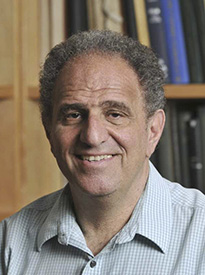
Professor Robert Tibshirani, Stanford University
October 6, 2022, 4 p.m.
Online through zoom
RSVP for Prof. Tibshirani's Lecture
Title: Data Science, Statistics, and Health with a focus on Statistical Learning and Sparsity
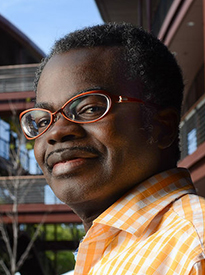 Professor Kwabena Boahen, Stanford University
Professor Kwabena Boahen, Stanford University
October 20, 2022, 4 p.m.
Title: Dendrocentric Learning: The Future of Artificial Intelligence
Abstract: Artificial Intelligence (AI) now advances by performing twice as many floating-point multiplications every two months, but the semiconductor industry tiles twice as many multipliers on a chip every two years. Moreover, returns from tiling these multipliers ever more densely now diminish because signals must travel relatively further and further. While travel can be shortened by stacking tiled multipliers in a three-dimensional (3-D) chip, such a solution acutely reduces the available surface area for dissipating heat. Here I propose to transcend this 3-D thermal constraint by moving away from learning with synapses to learning with dendrites. Synaptic inputs are not weighted precisely but rather ordered meticulously along a short stretch of dendrite, termed dendrocentric learning. With the help of a computational model of a dendrite and a conceptual model of a ferroelectric device that emulates it, I illustrate how dendrocentric learning AI—or Synthetic Intelligence (SI) for short—could run not with megawatts in the cloud but rather with watts on a smartphone.
Bio: Kwabena Boahen is Professor of Bioengineering and Electrical Engineering at Stanford University, with a courtesy appointment in Computer Science. He is also an investigator in Stanford’s Bio-X Institute, Wu Tsai Neurosciences Institute, and Human-Centered Artificial Intelligence Institute. He founded Stanford’s Brains in Silicon lab in 2005 to develop silicon chips that emulate the brain and computational models that link neuronal biophysics to cognitive behavior. His scholarship is widely recognized, with over a hundred publications, including a cover story in Scientific American featuring his lab’s work on a silicon retina and a silicon tectum that “wire together” automatically (May 2005). He has been invited to give over a hundred seminar, plenary, and keynote talks, including a 2007 TED talk, “A computer that works like the brain”, with over seven hundred thousand views. He has received several distinguished honors, including a Packard Fellowship for Science and Engineering (1999) and a National Institutes of Health Director’s Pioneer Award (2006). In recognition of his lab’s work on Neurogrid, an iPad-size platform that emulates networks of up to a million cortical neurons in biophysical detail, he was elected a fellow of the American Institute for Medical and Biological Engineering (2016) and of the Institute of Electrical and Electronic Engineers (2016). He is cofounder of Femtosense Inc (2018), a spin-out commercializing technology that makes neuromorphic chips easier to apply, developed by a multi-university, multi-investigator, hardware–software co-design project (Brainstorm) he led.
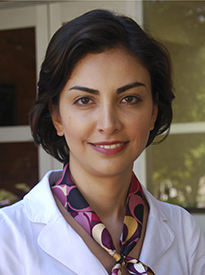 Professor Mona Jarrahi, University of California, Los Angeles
Professor Mona Jarrahi, University of California, Los Angeles
October 27, 2022, 4 p.m.
Title: New Frontiers in Terahertz Technology
Abstract: Although unique potentials of terahertz waves for chemical identification, material characterization, biological sensing, and medical imaging have been recognized for quite a while, the relatively poor performance, higher costs, and bulky nature of current terahertz systems continue to impede their deployment in field settings. In this talk, I will describe some of our recent results on developing fundamentally new terahertz electronic/optoelectronic components and imaging/spectrometry architectures to mitigate performance limitations of existing terahertz systems. In specific, I will introduce new designs of high-performance photoconductive terahertz sources that utilize plasmonic nanoantennas to offer terahertz radiation at record-high power levels of several milliwatts – demonstrating more than three orders of magnitude increase compared to the state of the art. I will describe that the unique capabilities of these plasmonic nanoantennas can be further extended to develop terahertz detectors and heterodyne spectrometers with quantum-level detection sensitivities over a broad terahertz bandwidth at room temperatures, which has not been possible through existing technologies. To achieve this significant performance improvement, plasmonic antennas and device architectures are optimized for operation at telecommunication wavelengths, where very high power, narrow linewidth, wavelength tunable, compact and cost-effective optical sources are commercially available. Therefore, our results pave the way to compact and low-cost terahertz sources, detectors, and spectrometers that could offer numerous opportunities for e.g., medical imaging and diagnostics, atmospheric sensing, pharmaceutical quality control, and security screening systems.
Biography: Mona Jarrahi received her B.S. degree in Electrical Engineering from Sharif University of Technology in 2000 and her M.S. and Ph.D. degrees in Electrical Engineering from Stanford University in 2003 and 2007. She served as a Postdoctoral Scholar at University of California Berkeley from 2007 to 2008. After serving as an Assistant Professor at University of Michigan Ann Arbor, she joined University of California Los Angeles in 2013 where she is currently a Professor and Northrop Grumman Endowed Chair in Electrical and Computer Engineering and the Director of the Terahertz Electronics Laboratory. Prof. Jarrahi has made significant contributions to the development of ultrafast electronic and optoelectronic devices and integrated systems for terahertz, infrared, and millimeter-wave sensing, imaging, computing, and communication systems by utilizing novel materials, nanostructures, and quantum structures as well as innovative plasmonic and optical concepts. The outcomes of her research have appeared in 250 publications and 200 invited talks and have received a significant amount of attention from scientific news outlets including Huffington Post, Popular Mechanics, EE Times, and IEEE Spectrum. Her scientific achievements have been recognized by several prestigious awards including the Presidential Early Career Award for Scientists and Engineers (PECASE); Friedrich Wilhelm Bessel Research Award from Alexander von Humboldt Foundation; Moore Inventor Fellowship from the Gordon and Betty Moore Foundation; A F Harvey Engineering Research Prize from the Institution of Engineering and Technology (IET); Kavli Fellowship by the USA National Academy of Sciences (NAS), Grainger Foundation Frontiers of Engineering Award from the USA National Academy of Engineering (NAE); Breakthrough Award from Popular Mechanics Magazine; Research Award from Okawa Foundation; Innovations in Regulatory Science Award from the Burroughs Wellcome Fund; Harold E. Edgerton Award in High-Speed Optics from the International Society for Optics and Photonics (SPIE); Early Career Award in Nanotechnology from the IEEE Nanotechnology Council; Outstanding Young Engineer Award from the IEEE Microwave Theory and Techniques Society; Booker Fellowship from the USA National Committee of the International Union of Radio Science; Lot Shafai Mid-Career Distinguished Achievement Award from the IEEE Antennas and Propagation Society; Early Career Award from the USA National Science Foundation (NSF); Young Investigator Awards from the USA Office of Naval Research (ONR), the Army Research Office (ARO), and the Defense Advanced Research Projects Agency (DARPA); Watanabe Excellence in Research Award from UCLA Henry Samueli School of Engineering and Applied Science; Elizabeth C. Crosby Research Award from the University of Michigan; and Distinguished Alumni Award from Sharif University of Technology. Prof. Jarrahi is a Fellow of the Institute of Electrical and Electronics Engineers (IEEE), Optical Society of America (OSA), International Society for Optics and Photonics (SPIE), Institute of Physics (IoP), and has served as a distinguished lecturer of IEEE, traveling lecturer of OSA, and visiting lecturer of SPIE societies.
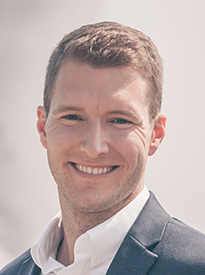 Ryan Quint, PhD, PE, North American Electric Reliability Corporation (NERC)
Ryan Quint, PhD, PE, North American Electric Reliability Corporation (NERC)
January 12, 2023, 4 p.m.
Online through Zoom
Title: Ensuring Reliability, Resilience, and Security under Rapid Grid Transformation
Abstract: The electricity sector is experiencing a profound transformation toward clean energy solutions and new technologies. Yet the grid is also faced with increasing challenges such as extreme weather, fuel supply issues, cyber threats, and other emerging risks. This presentation will outline key trends in the electricity sector and steps being taken to mitigate risk to ensure a reliable, resilient, and secure power system under unprecedented operating conditions and pace of change occurring today and into the future.
Bio: Ryan Quint is the Director of Engineering and Security Integration at the North American Electric Reliability Corporation. He leads industry efforts focused on grid transformation, emerging technologies, inverter-based resources, distributed energy resources, and integrating security with conventional engineering practices. He has industry experience at Dominion Virginia Power and the Bonneville Power Administration, received his PhD from Virginia Tech, and is a registered professional engineer.
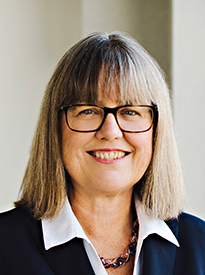 Professor Donna Strickland, University of Waterloo
Professor Donna Strickland, University of Waterloo
January 19, 2023, 6:00 p.m. in MY150
Title: From Nonlinear Optics to High-Intensity Laser Physics
Abstract: The laser increased the intensity of light that can be generated by orders of magnitude and thus brought about nonlinear optical interactions with matter. Chirped pulse amplification, also known as CPA, changed the intensity level by a few more orders of magnitude and helped usher in a new type of laser-matter interaction that is referred to as high-intensity laser physics. In this talk, I will discuss the differences between nonlinear optics and high-intensity laser physics. The development of CPA and why short, intense laser pulses can cut transparent material will also be included. I will also discuss future applications.
Bio: Dr. Donna Strickland is a professor in the Department of Physics and Astronomy at the University of Waterloo and is one of the recipients of the Nobel Prize in Physics 2018 for developing chirped pulse amplification with Gérard Mourou, her PhD supervisor at the time. They published this Nobel-winning research in 1985 when Strickland was a PhD student at the University of Rochester.
Strickland earned a B.Eng. from McMaster University and a PhD in optics from the University of Rochester. Strickland was a research associate at the National Research Council Canada, a physicist at Lawrence Livermore National Laboratory and a member of technical staff at Princeton University. In 1997, she joined the University of Waterloo, where her ultrafast laser group develops high-intensity laser systems for nonlinear optics investigations. She was named a 2021 Hagler Fellow of Texas A&M University and sits on the Growth Technology Advisory Board of Applied Materials.
Strickland served as the president of the Optica (formerly OSA) in 2013 and is a fellow of Optica, SPIE, the Royal Society of Canada and the Royal Society. She is an honorary fellow of the Canadian Academy of Engineering and the Institute of Physics, an international member of the US National Academy of Science and member of the Pontifical Academy of Science. Strickland was named a Companion of the Order of Canada.
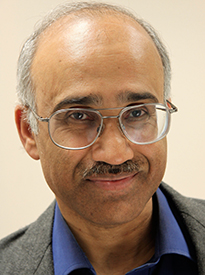 Professor P.P. Vaidyanathan, California Institute of Technology
Professor P.P. Vaidyanathan, California Institute of Technology
February 16, 2023, 4 p.m. Online
Title: Srinivasa Ramanujan and Signal Processing
Abstract: The great mathematician Srinivasa Ramanujan introduced a summation in 1918, today called the Ramanujan-sum. For many years this summation was used by mathematicians to prove important results in number theory. In recent years, some researchers have found applications of this sum in digital signal processing, especially in identifying periodic components of signals buried in noise. In our recent work we have generalized the Ramanujan-sum decomposition in several directions, and this has opened up some new theory as well as applications. Many beautiful properties are enjoyed by the new representations, thanks to the genius and vision of Ramanujan. In this lecture we briefly talk about Ramanujan as a person and give an overview of the new signal processing developments. Applications in signal denoising, and in the study of DNA and protein sequences will be presented among others.
Bio: Prof. Vaidyanathan is the Kiyo and Eiko Tomiyasu Professor of Electrical Engineering at the California Institute of Technology where he has been on the faculty since 1983. He also served as the department head for the period 2002-2005. He has authored more than 500 papers in the areas of digital signal processing and communications, and several of his papers have received prizes from the IEEE. He is the author/coauthor of the four books, and a Life Fellow of the IEEE. Some of his recognitions include the F. E. Terman Award of the American Society for Engineering Education, the IEEE CAS Society's Golden Jubilee Medal, and several awards for excellence in teaching at the California Institute of Technology, including the Northrop-Grumman prize for excellence in teaching. He has also received the IEEE Signal Processing Society's Technical Achievement Award, Education Award, and the “Society Award”. He received the IEEE Gustav Robert Kirchhoff Award (an IEEE Technical Field Award) in 2016, for “Fundamental contributions to digital signal processing.” He received the EURASIP Athanasios Papoulis award in 2021. He was elected to the U.S. National Academy of Engineering in 2019, and the Indian National Academy of Engineering in 2021.
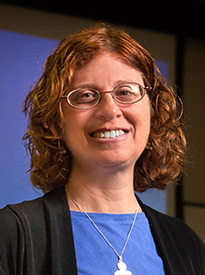 Professor Susan Lord, University of San Diego
Professor Susan Lord, University of San Diego
March 9, 2023, 4 p.m. in SF1105
Title: Enhancing Learning and Inclusivity in Electrical Engineering
Abstract: How can we educate students to be the most effective engineers when they graduate? What does it take to attract a broader range of students to electrical and computer engineering? What curricular efforts could support both of these goals? These are important questions for the discipline. As part of an NSF-funded Revolutionizing Engineering Departments (RED) grant, “Developing Changemaking Engineers,” the Shiley-Marcos School of Engineering (SMSE) at the University of San Diego (USD) is working to address these questions.
In this talk, I'll begin with a study that explores a large, multi-institutional, longitudinal dataset of engineering undergraduates. I'll describe who is currently attracted to engineering and will highlight how the field of electrical engineering fares compared to other engineering disciplines. Then, I'll describe one promising approach to change the demographics of the electrical engineering student body and to increase the learning that happens in the undergraduate curriculum. The approach entails reframing electrical engineering from a purely technical discipline to one which is socio-technical and I'll present modules we've developed for Circuits that accomplish this.
Bio: Susan M. Lord is Professor and Chair of Integrated Engineering at the University of San Diego. She received a BS from Cornell University in Materials Science and Electrical Engineering (EE) and an MS and PhD in EE from Stanford University in EE. Her research focuses on the study and promotion of diversity in engineering including student pathways and inclusive teaching. She is passionate about changing the culture of engineering to be more welcoming and has integrated sociotechnical modules into her engineering courses. She has won best paper awards from the Journal of Engineering Education, IEEE Transactions on Education, and Education Sciences. Dr. Lord is a Fellow of the IEEE and ASEE and received the 2018 IEEE Undergraduate Teaching Award. She is a coauthor of The Borderlands of Education: Latinas in Engineering. She is a co-Director of the National Effective Teaching Institute (NETI).
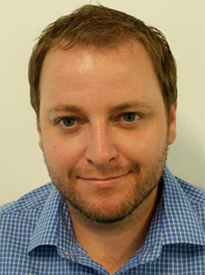 Professor Joseph Bardin, Google Quantum AI and The University of Massachusetts Amherst
Professor Joseph Bardin, Google Quantum AI and The University of Massachusetts Amherst
March 16, 2023, 4 p.m. in SF1105
Title: Engineering a Quantum Computer: from fundamentals to control ICs
Abstract: Over the past decade, the field of quantum computing has evolved from one primarily known for generating scientific papers to one which promises to enable computations that would not be possible using any other known technology. Following this potential, numerous large companies are racing to build a quantum computer, and governments across the globe are pouring money into academic research that may lead to the improvement of the fundamental building blocks and supporting technologies used throughout the quantum information sciences. Much of the excitement is driven by seemingly exponential progress in the field and the associated steady stream of major announcements, which have quickly grown from basic proof of principles to large system demonstrations. In fact, many of the major industrial players in the field who have helped to drive this progress currently have their eyes set on the realization of large-scale error-corrected quantum computers. Behind the rapid progress, is a story of complex system design and numerous engineering innovations.
In this talk, I will give an overview of superconducting quantum computing, with a focus on research topics of interest to the electrical engineering community. The talk will begin with a brief introduction to the field of quantum computing. I will then describe the technology at the core of Google’s state-of-the-art Sycamore quantum computer systems before explaining how these devices have been used for the first demonstrations of quantum advantage and error suppression using quantum error correction. After bringing the audience up to date with the state-of-the-art, I will describe the significant gap between today’s technology and that required for useful error-corrected quantum computing and how EE-related technologies such as integrated circuits (ICs), packaging, and interconnects will be critical in bridging this gap. Examples of research ICs will be presented. The talk will conclude with a brief discussion of open issues related to the scaling of superconducting quantum computers.
Bio: Joseph Bardin is a Full Professor of Electrical Engineering at the University of Massachusetts Amherst and a Research Scientist Google Quantum AI. He received the PhD degree in electrical engineering from the California Institute of Technology in 2009. His research group at UMass currently focuses on low temperature integrated circuits with applications in radio astronomy and the quantum information sciences. At Google, he leads the team working to build integrated circuits for Google’s future quantum computers. Professor Bardin was a recipient of a 2011 DARPA Young Faculty Award, a 2014 NSF CAREER Award, a 2015 Office of Naval Research YIP Award, a 2016 UMass Amherst College of Engineering Barbara H. and Joseph I. Goldstein Outstanding Junior Faculty Award, a 2016 UMass Amherst Award for Outstanding Accomplishments in Research and Creative Activity, a 2020 IEEE MTT-S Outstanding Young Engineer Award, the 2020 BCICTS Best Paper Award, and the 2022 IEEE MTT-S Microwave Magazine Best Paper Award.
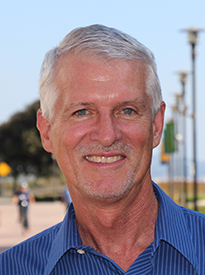 Professor James Rawlings, University of California, Santa Barbara
Professor James Rawlings, University of California, Santa Barbara
March 30, 2023, 4 p.m. in SF1105
Title: Economic Optimization of Large-Scale Systems with Model Predictive Control
Abstract: Maintaining high standards of living while decreasing our impact on the planet requires both new technologies as well as increasingly efficient operation of
these technologies at large scale. This talk presents the central ideas of model predictive control, which has become over the last 20 years the leading advanced feedback control method, both in industrial practice as well as a topic of control theory research. We discuss the fundamental reasons for this success, which builds upon the foundations of optimal control and dynamic modeling, supplemented with measurement feedback to make the resulting system robust against model inaccuracies and disturbances. We present a large scale example of such a system performing in real time an economic optimization of a 155 building campus-wide energy system.
Next we discuss the education of engineers to understand, operate and improve this kind of technology. We start with a motivational example that can be easily understood by any undergraduate engineering student. Although conceptually simple, the fundamental ideas of noisy measurements, unstable processes, Brownian motion, feedback stabilization, controller tuning, and integral control already play central roles in understanding the complex behavior that arises. The talk closes with two examples of recent experimental hardware advances that enable a rethinking of the control laboratory as a vehicle for both teaching and demonstrating new research results in feedback control theory.
Bio: James B. Rawlings received the B.S. from the University of Texas and the Ph.D. from the University of Wisconsin, both in Chemical Engineering. He spent one year at the University of Stuttgart as a NATO postdoctoral fellow and then joined the faculty at the University of Texas. He moved to the University of Wisconsin in 1995, and then to the University of California, Santa Barbara in 2018, and is currently the Mellichamp Process Control Chair in the Department of Chemical Engineering, and the co-director of the Texas-Wisconsin-California Control Consortium (TWCCC).
Professor Rawlings's research interests are in the areas of chemical process modeling, monitoring and control, nonlinear model predictive control, moving horizon state estimation, and molecular-scale chemical reaction engineering. He has written numerous research articles and coauthored three textbooks: "Model Predictive Control: Theory Computation, and Design," 2nd ed. (2020), with David Mayne and Moritz Diehl, "Modeling and Analysis Principles for Chemical and Biological Engineers" (2013), with Mike Graham, and "Chemical Reactor Analysis and Design Fundamentals," 2nd ed. (2020), with John Ekerdt.
In recognition of his research and teaching, Professor Rawlings has
received several awards including:
- Election to the National Academy of Engineering;
- William H. Walker Award for Excellence in Contributions to Chemical
Engineering Literature from the AIChE; - "Doctor technices honoris causa" from the Danish Technical
University; - The inaugural High Impact Paper Award from the International
Federation of Automatic Control; - The Ragazzini Education Award from the American Automatic Control
Council; - The Computing in Chemical Engineering Award and Excellence in Process
Development Award from the AICHE;
He is a fellow of IFAC, IEEE, and AIChE.